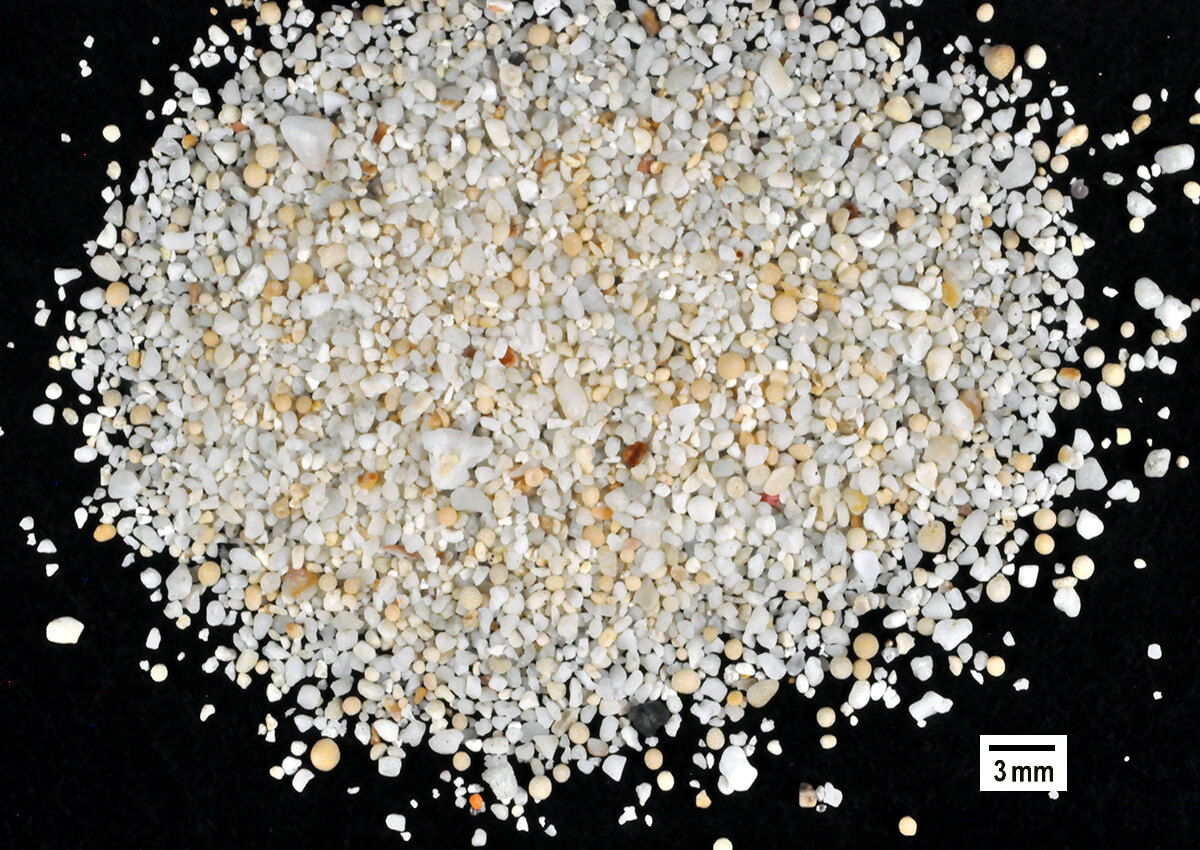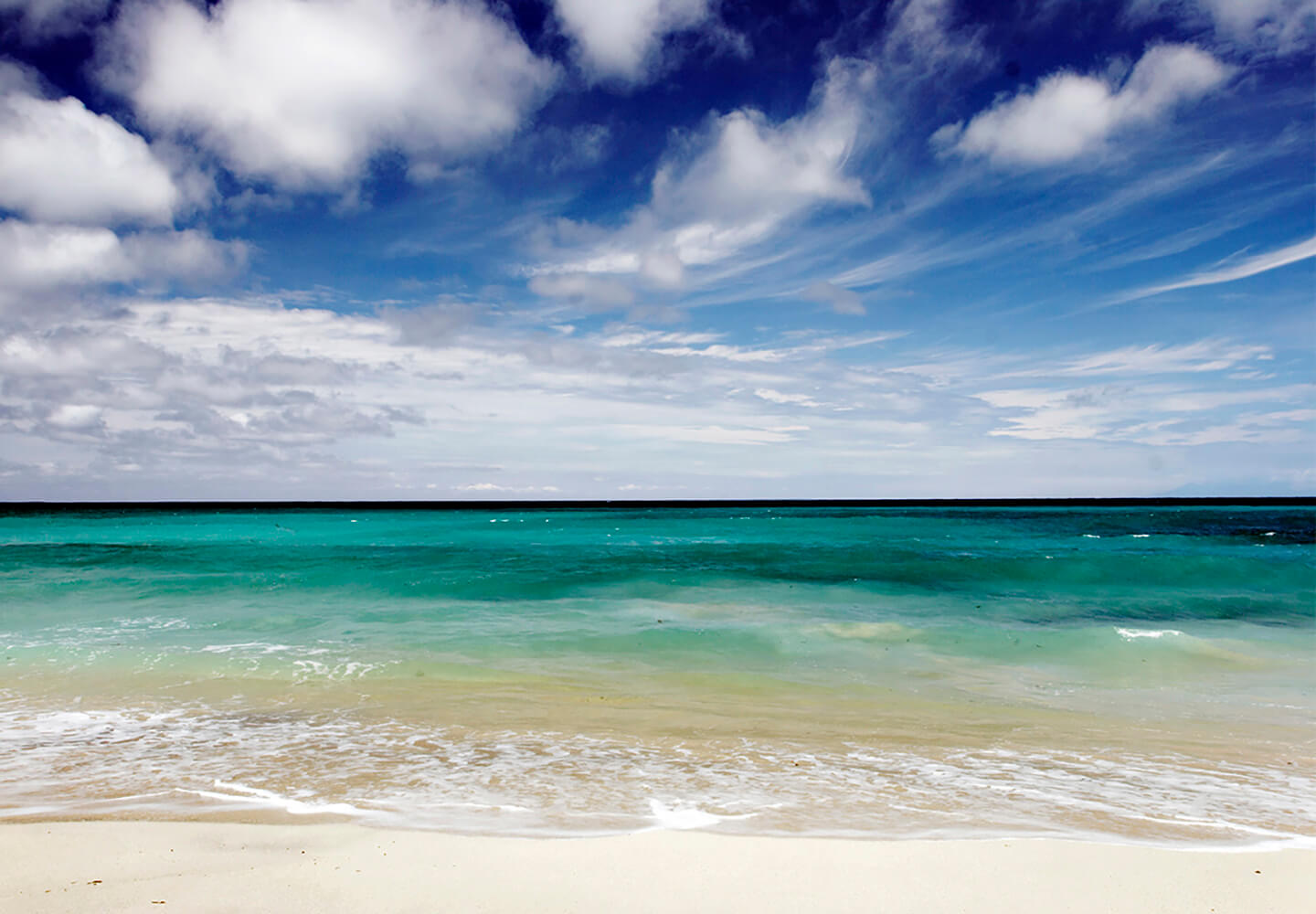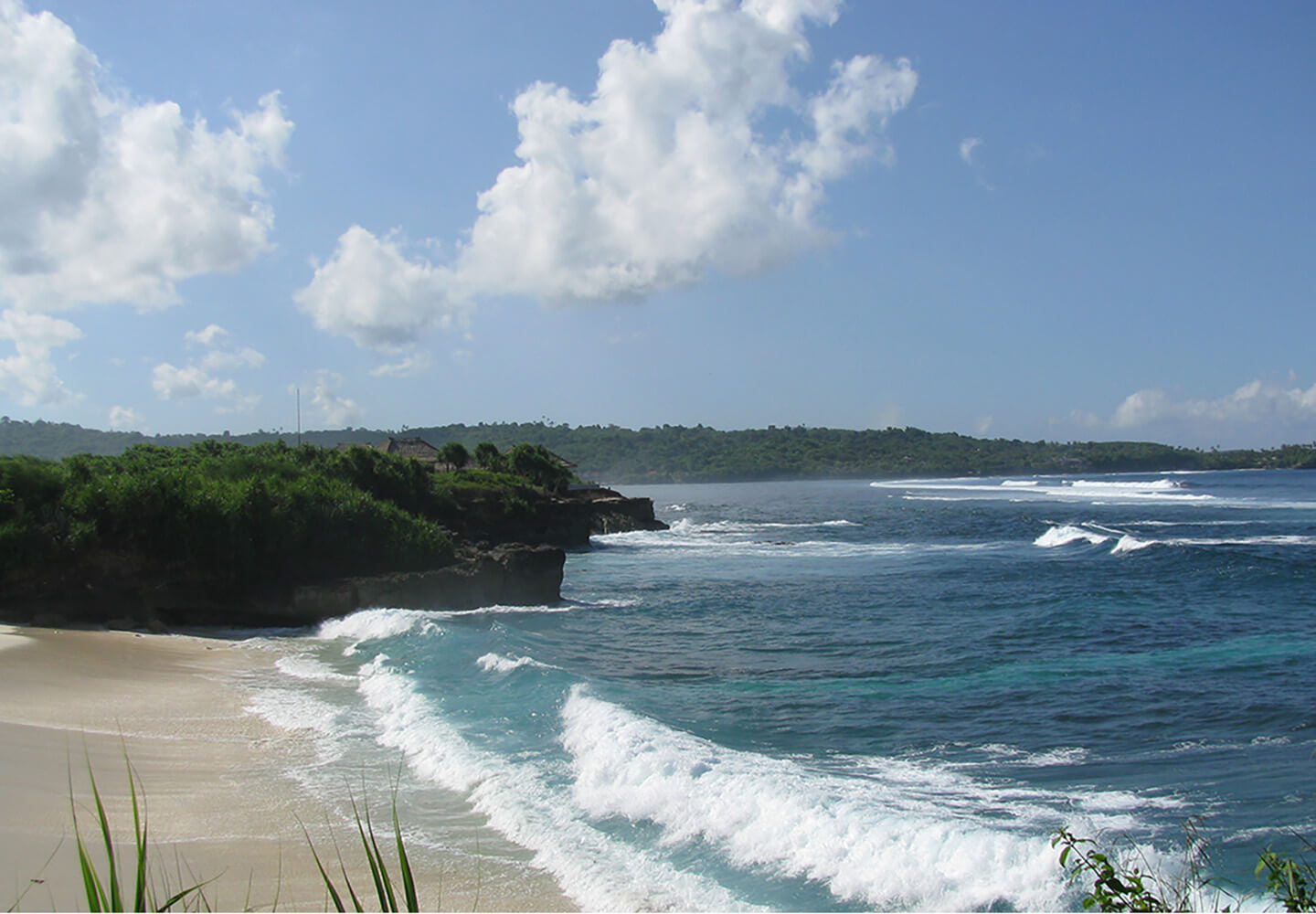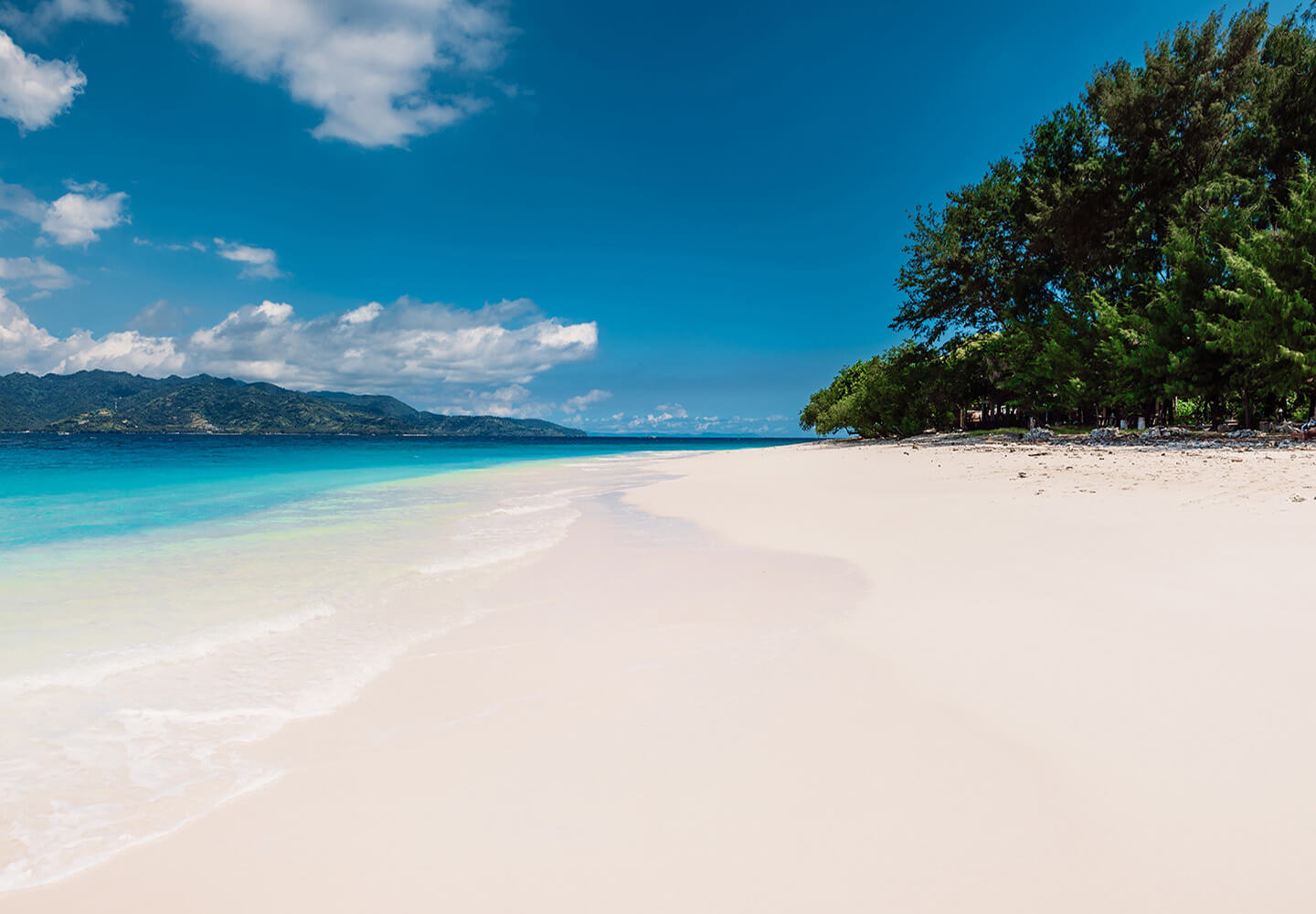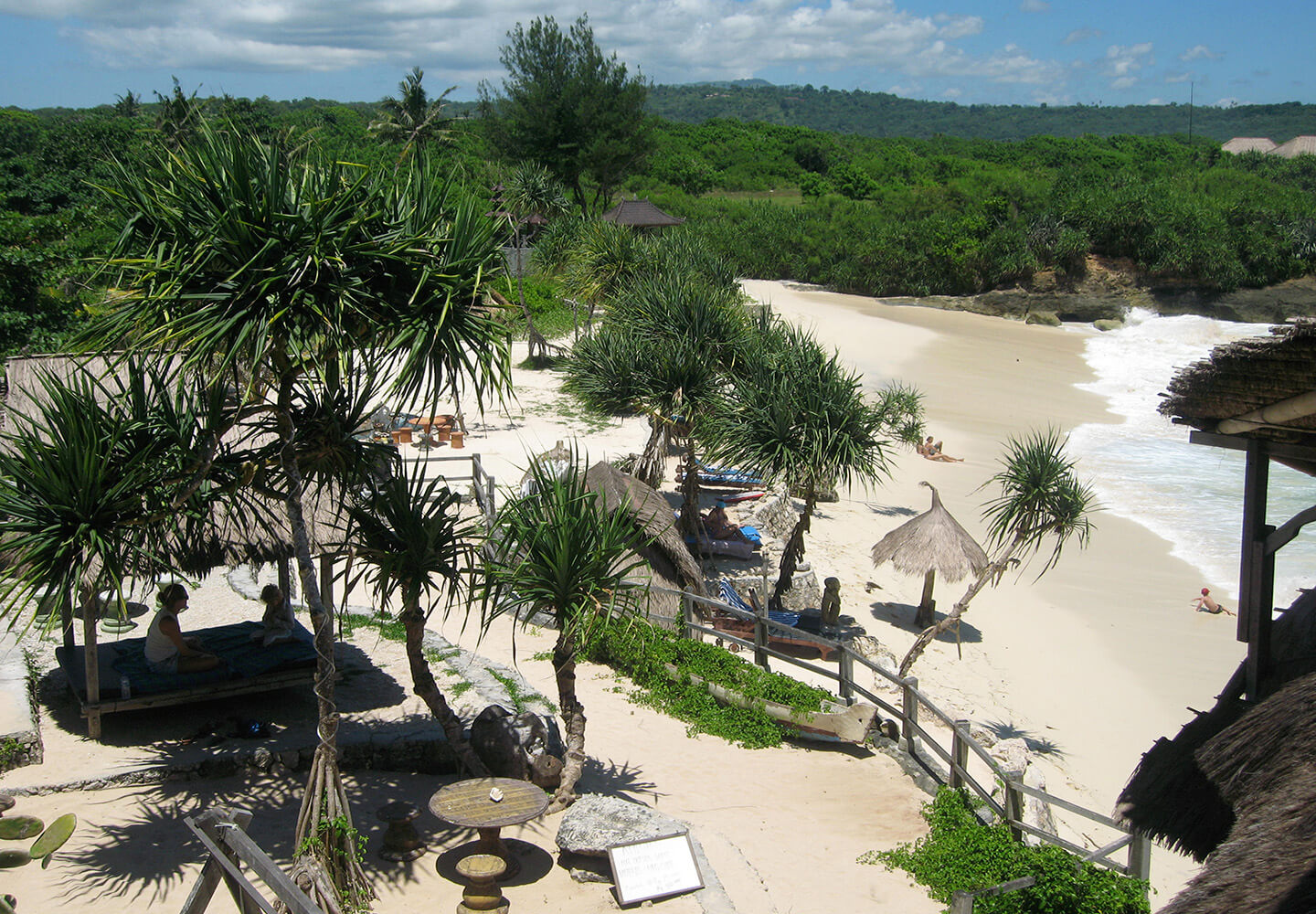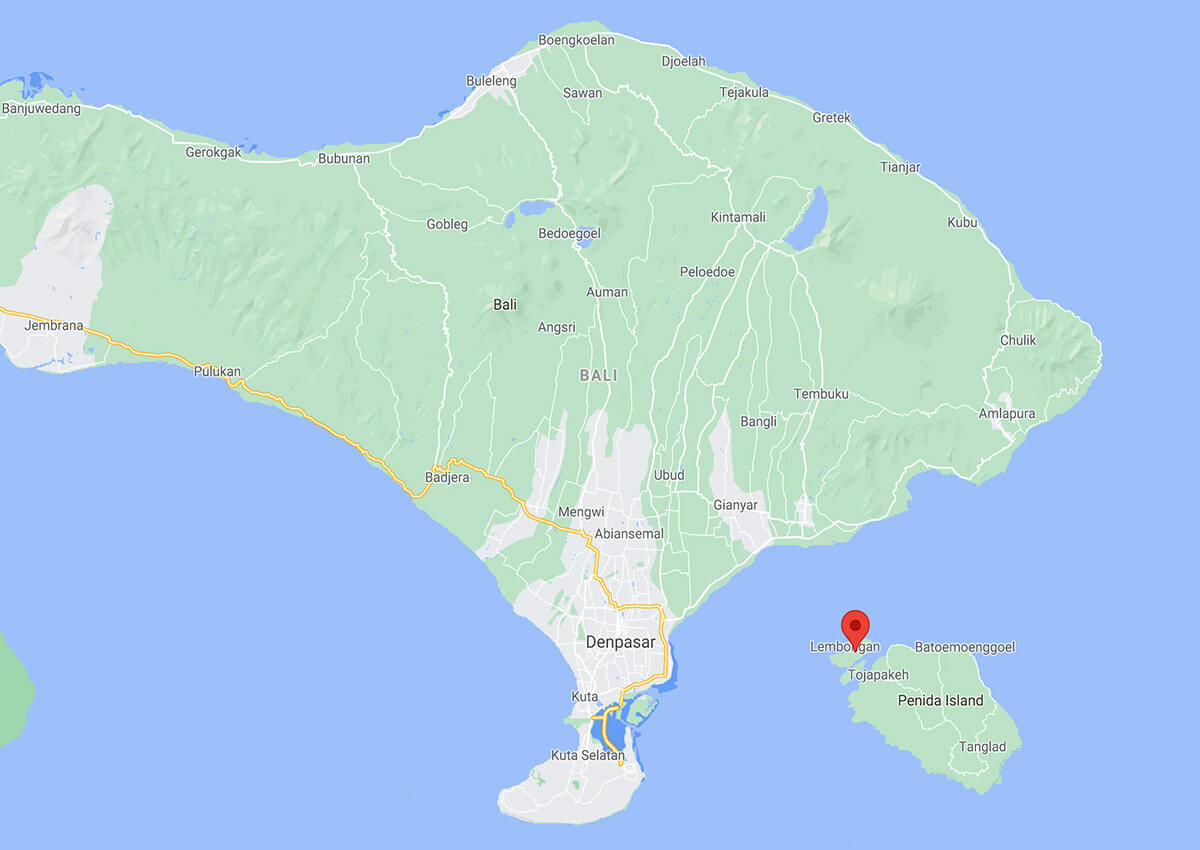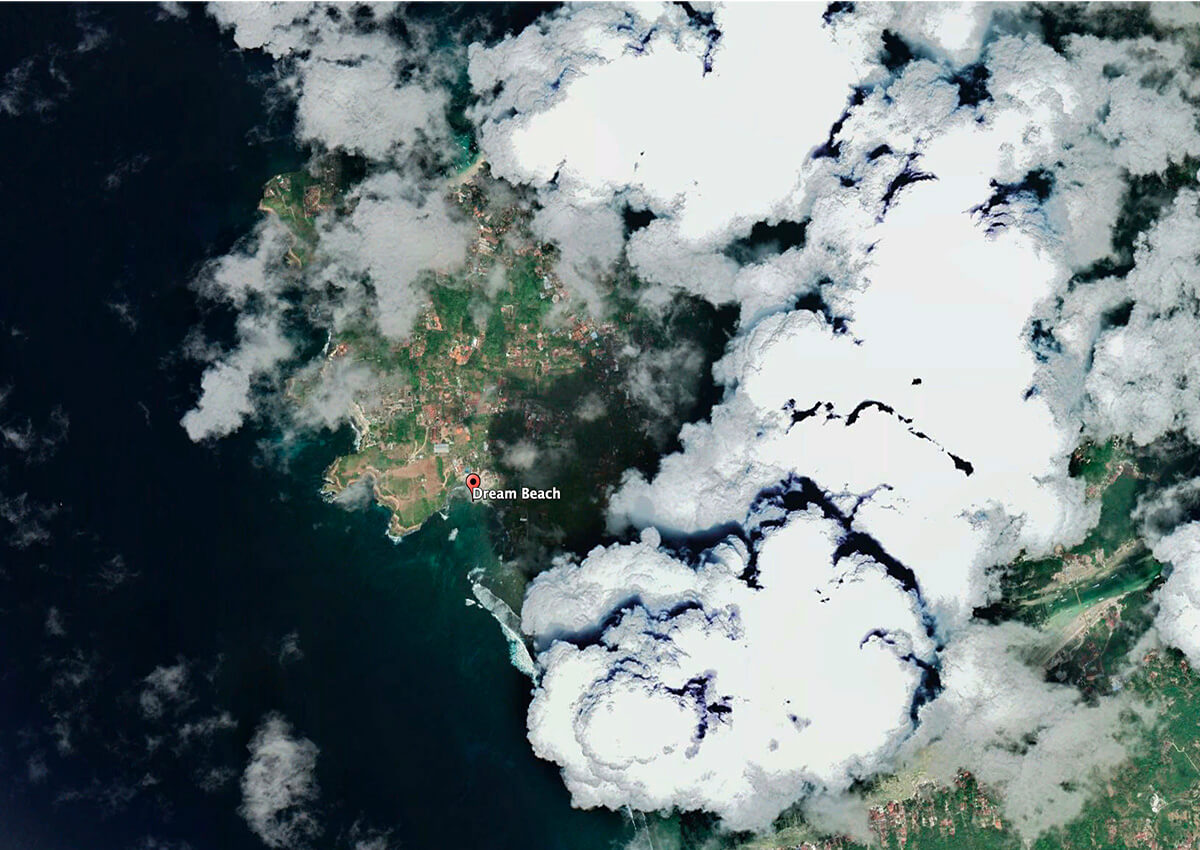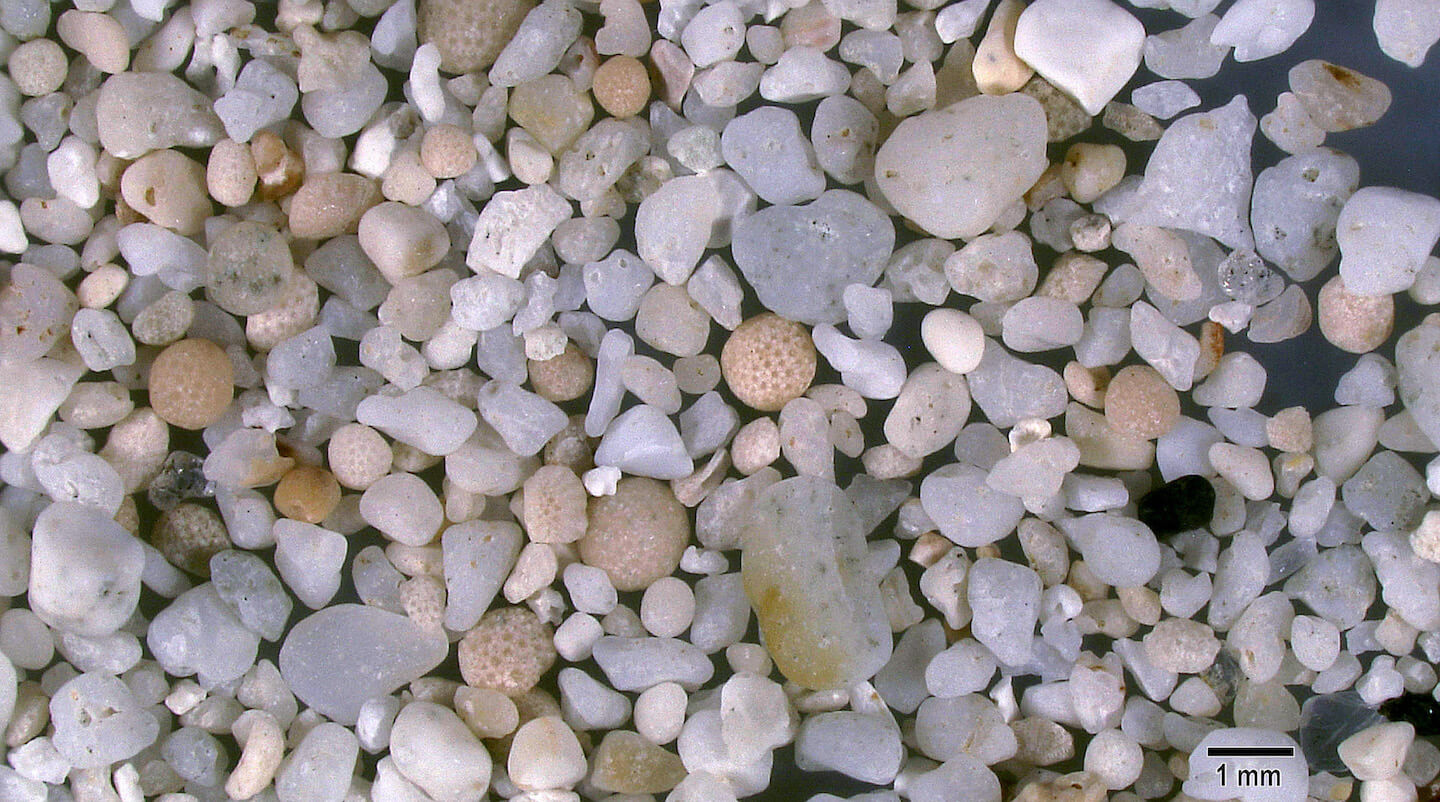

This Dream Beach sand is comprised exclusively of marine sand grains with a centrally located round tan foram (Foraminifera sp), several additional white and tan forams, and well-rounded fragments of shells and pieces of coral.
Geographic Overview
While the island of Bali is defined by imposing chain of volcanoes, it boasts of forested mountains, long sandy beaches with endless waves, and impressive coral reefs. Agriculture has been strong in Bali due high soil fertility (volcanic soil) generated from thick deposits of ash, allowing for annual rice harvests, lush forests and beautiful gardens.
Sand Gallery
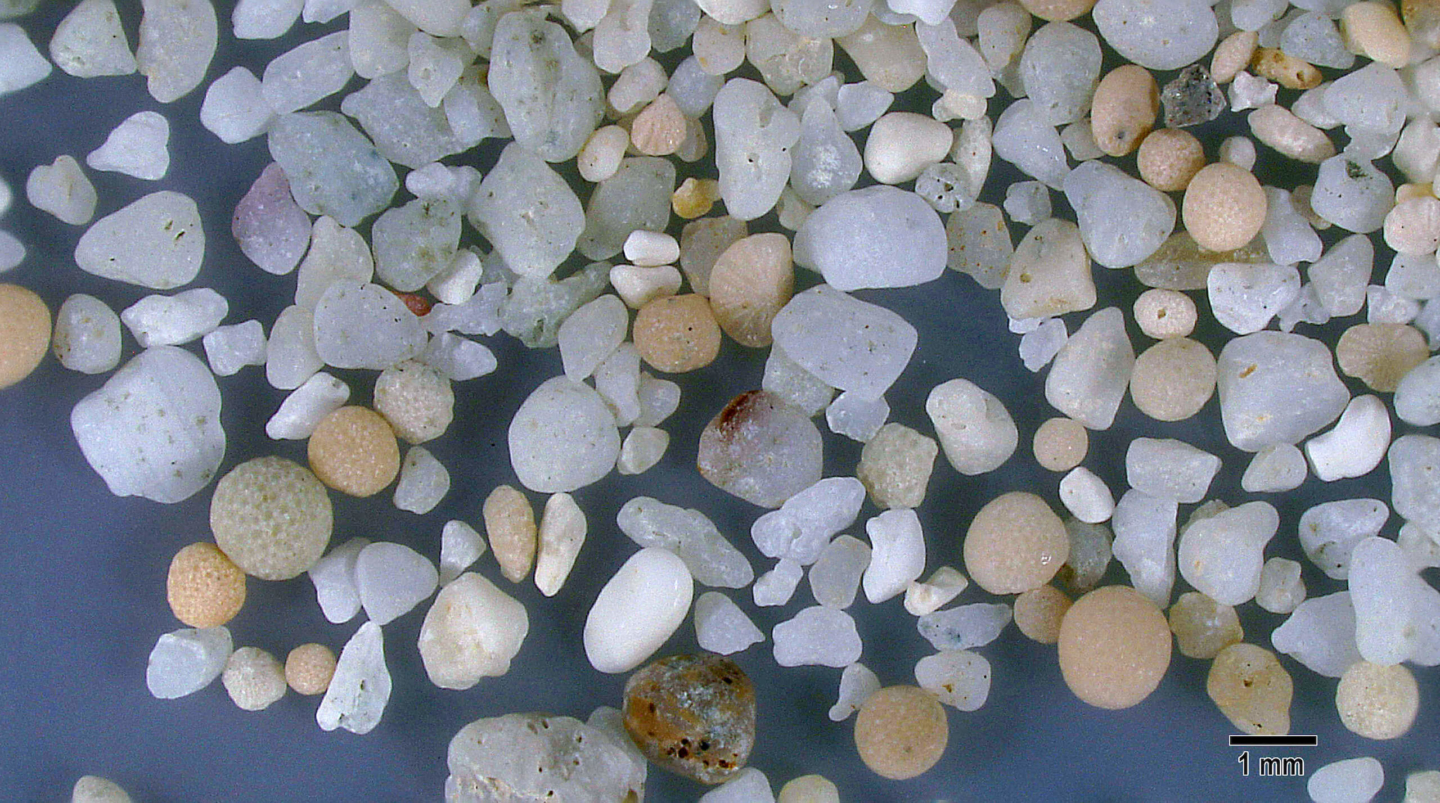
In addition to several tan and off white forams, there white opaque pieces of shells as well as a couple of shell fragments with some reddish-brown coloration. These sand grains are smoothly rounded from years of exposure to wave action.
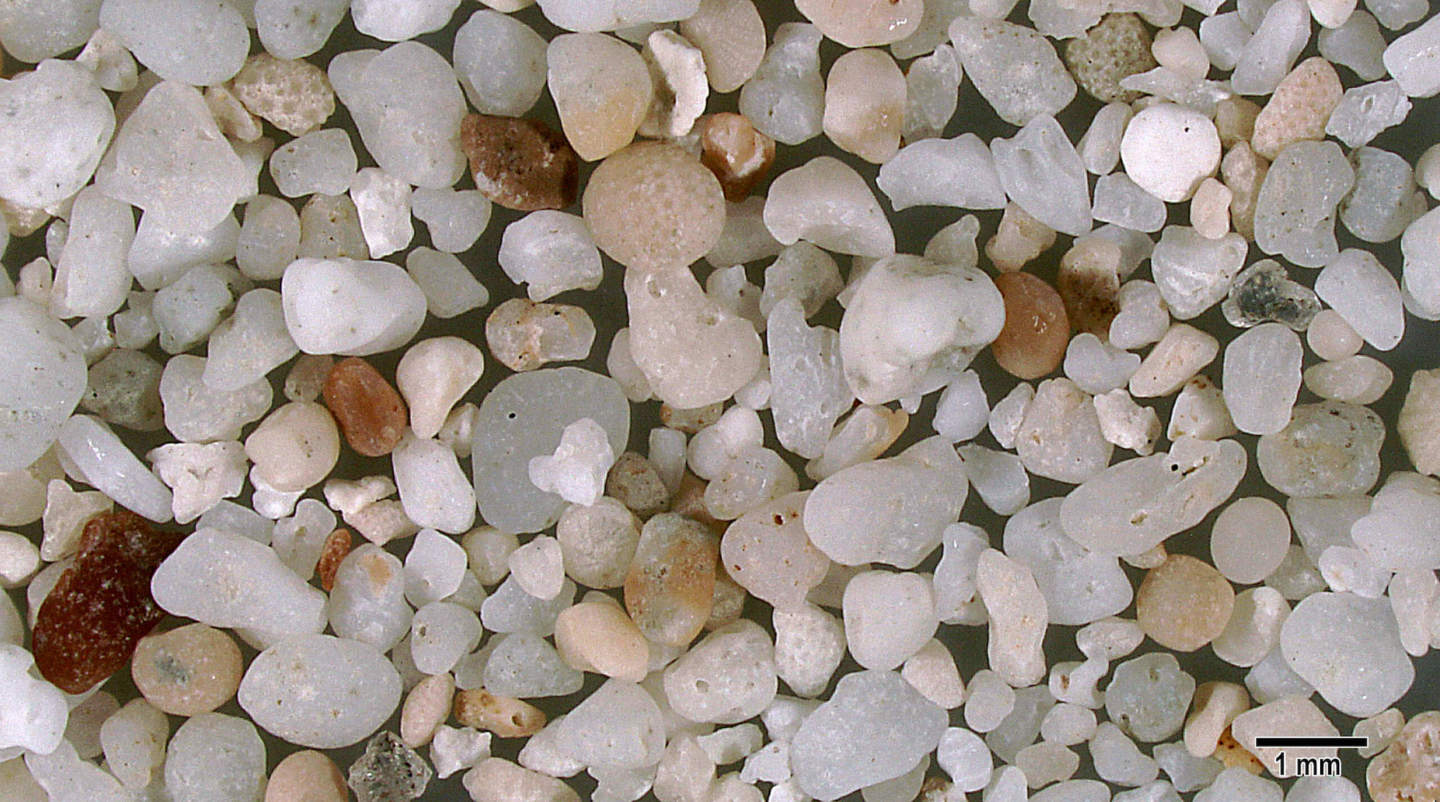
Reddish-brown and off-white translucent sand grains are from broken up shells and coral. Light tan structures with dimpled surfaces are the shells of microscopic organisms called forams (short for Foraminifera).
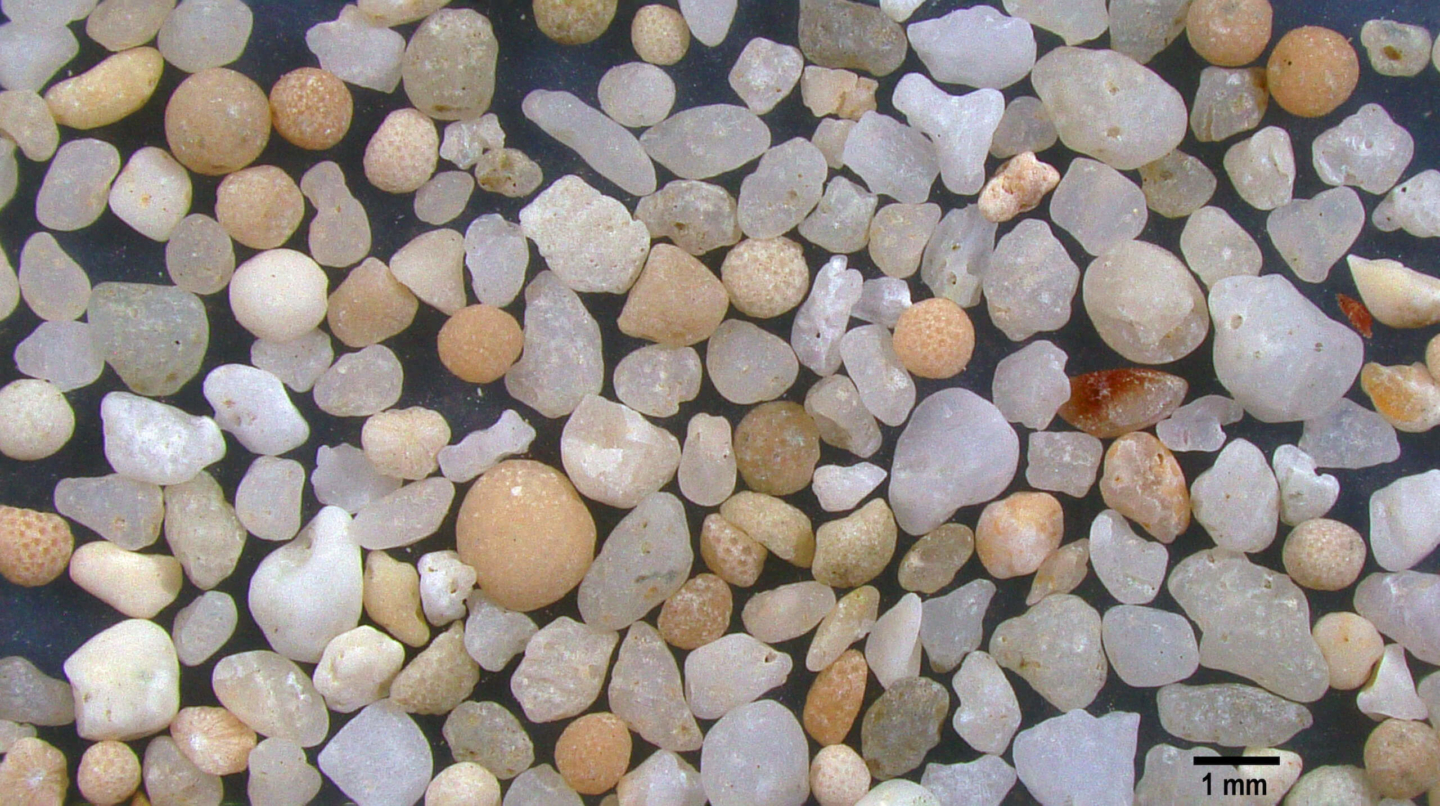
Rounded tan and off white sand grains with dimpled surfaces are forams; some, with less distinct dimpling, have been worn smooth by wave action. Other white translucent sand grains are pieces of shell and coral. One shell grain fragment has some reddish-brown coloration.
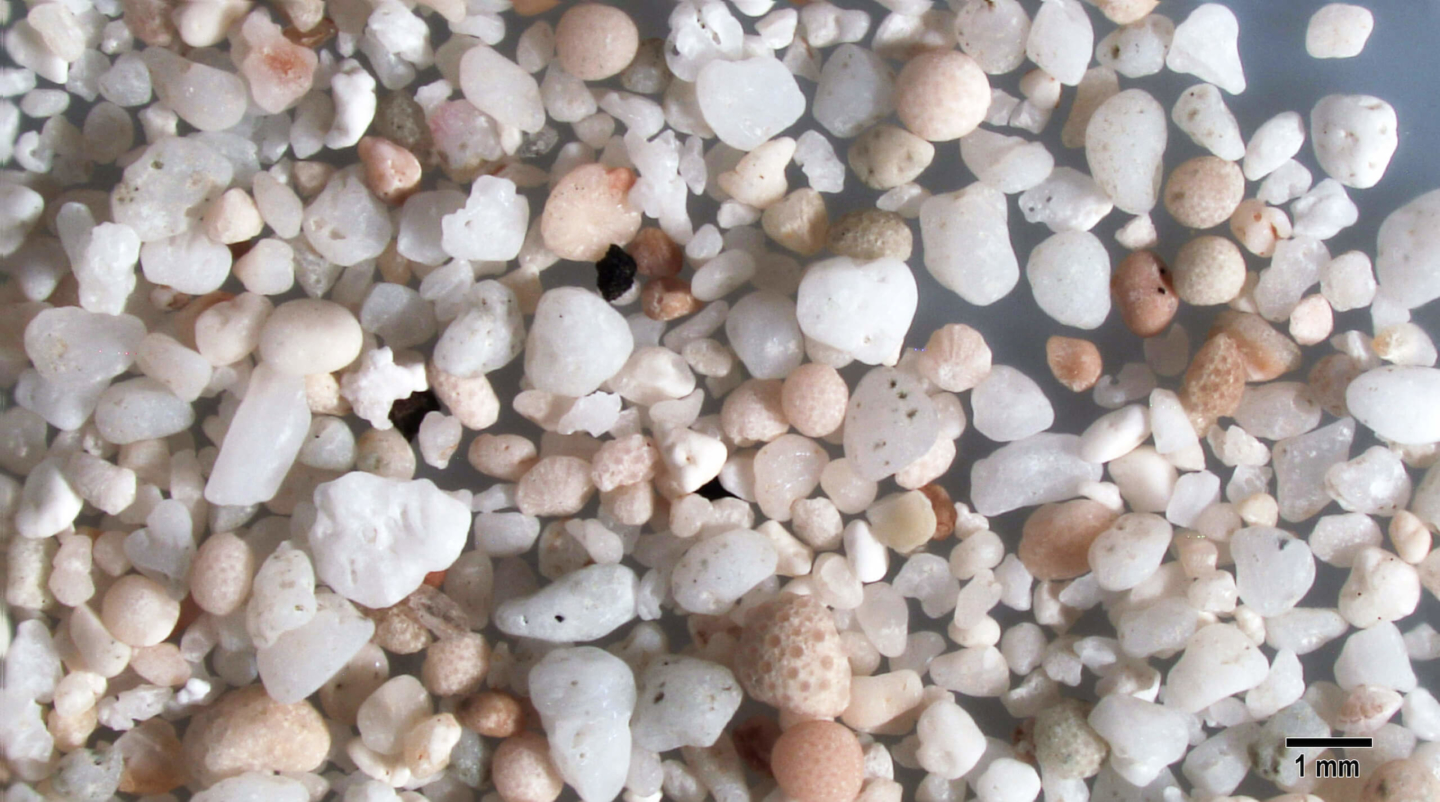
Tan rounded forams and smooth but irregularly shaped pieces of shell are present in this sand sample. This sand sample is 100% marine origin.
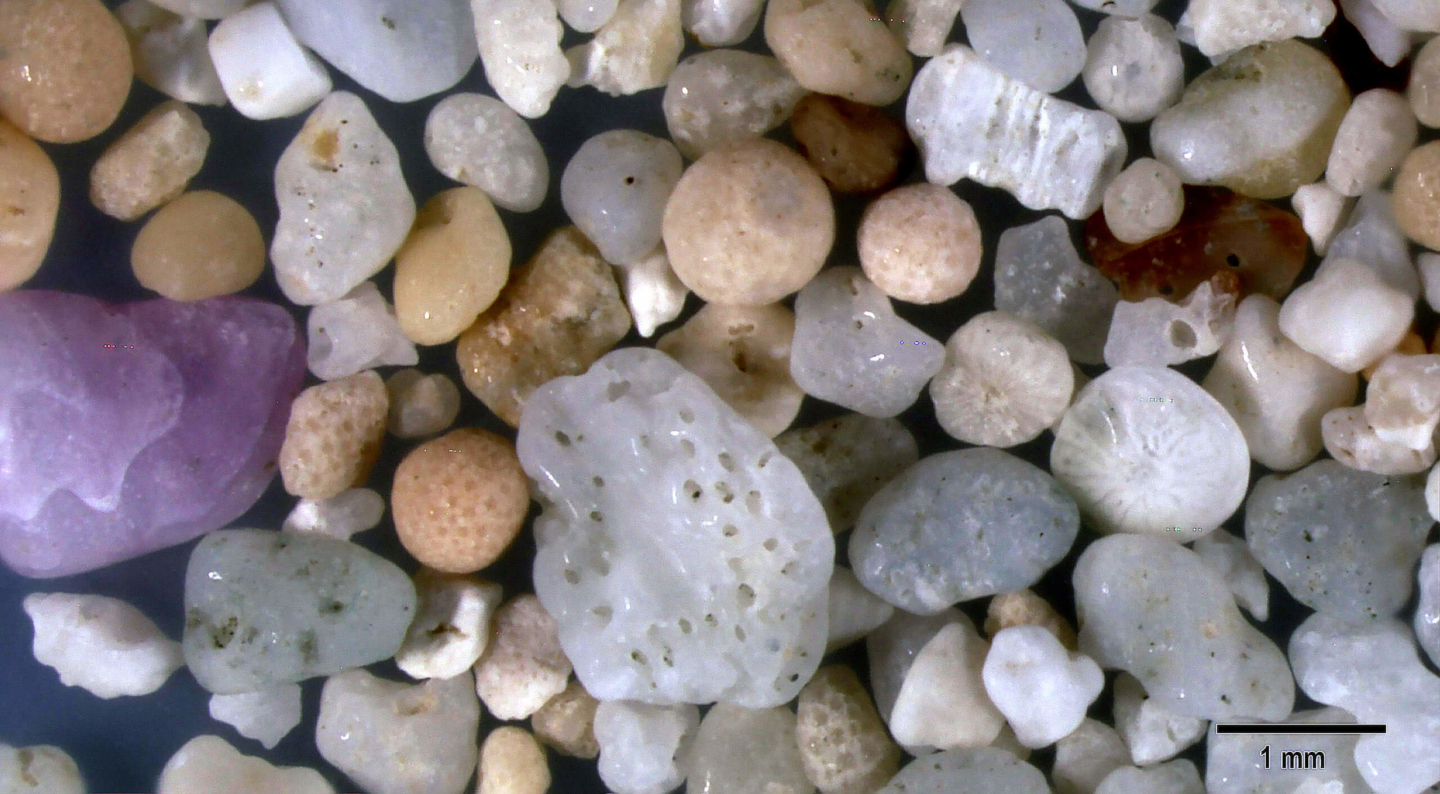
This high magnification photo shows two different species of forams, light tan round forams with dimpled surfaces and off-white round forams showing evidence of radial chambers. A large white shell fragment in the lower center has drill holes as evidence of predation. A purple mollusk shell fragment is present at the left of this image.
